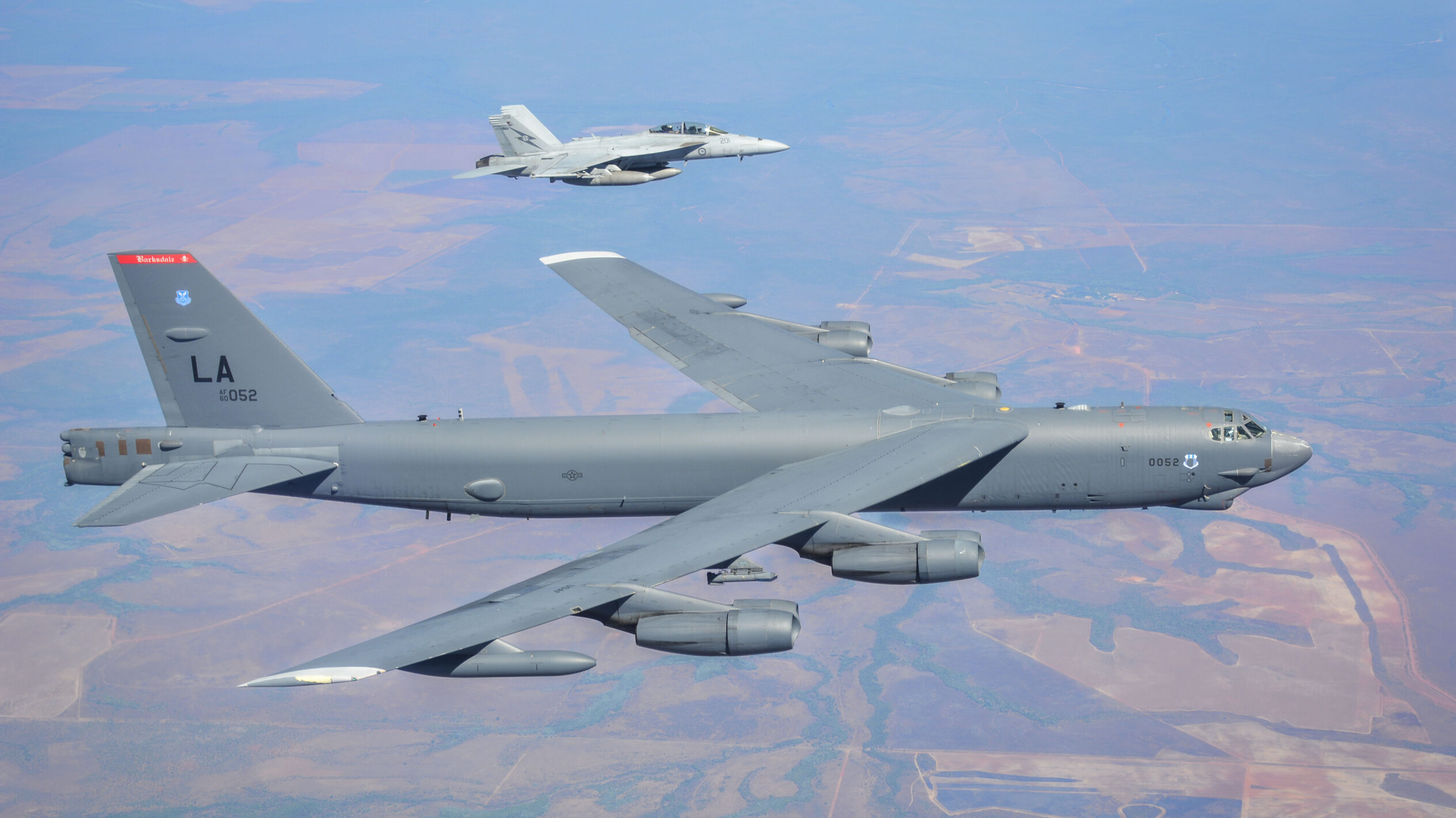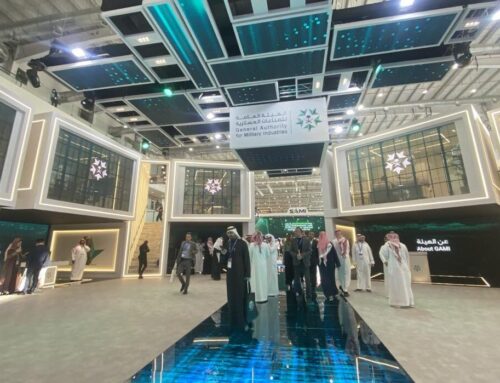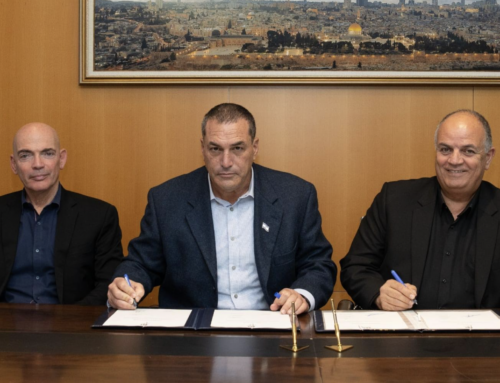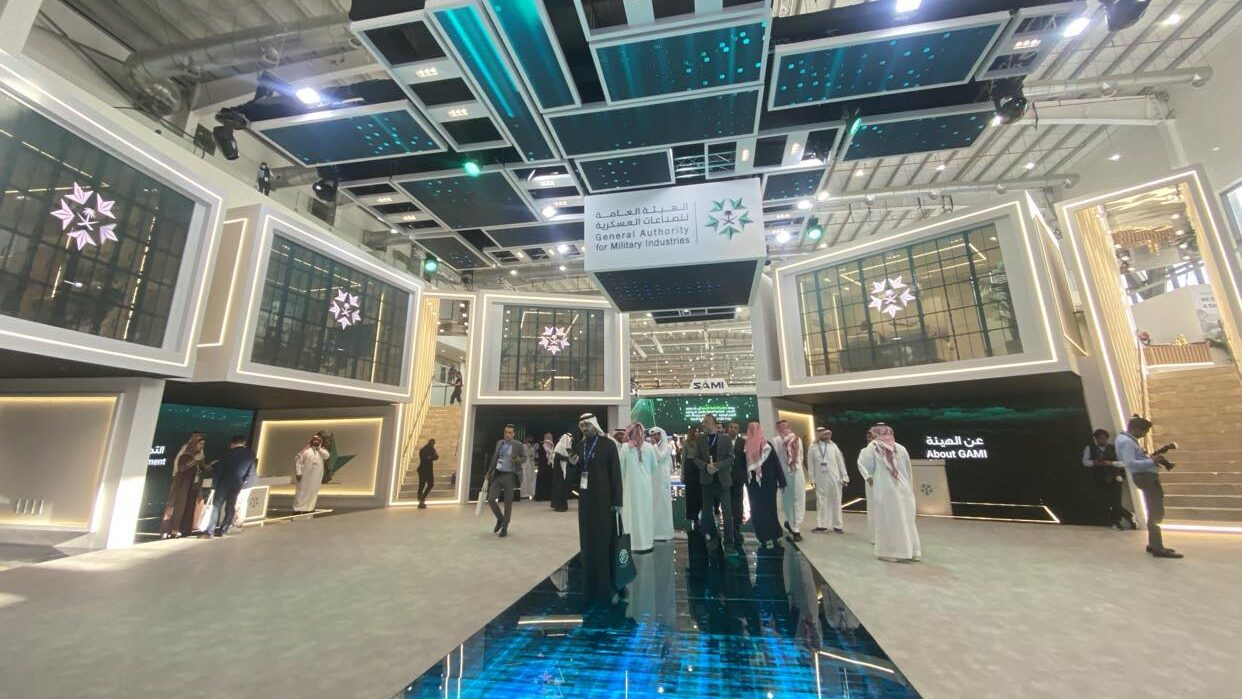
A US Air Force B-52H Stratofortress and a Royal Australian Air Force F/A-18F Super Hornet fly over the Northern Territory during Exercise Talisman Sabre 23. Credit: Australian MoD
WASHINGTON — The Air Force is pushing back its schedule for modernizing the Eisenhower-era B-52 Stratofortress with a new radar by a year amid integration challenges, according to a new report by the US military’s top weapons tester.
A two-stage Milestone C decision — the beginning of a program’s production phase that in this case signifies when the first bombers will get new radars — for the B-52 Radar Modernization Program is now planned for fiscal 2026, in the second and fourth quarters, according to the Jan. 31 report [PDF] from the Pentagon’s Director of Operational Test & Evaluation (DOT&E).
The dates are somewhat notional, as the report states that “[e]xact dates are uncertain due to technical and schedule risks.” However, last year’s DOT&E report [PDF] found the decision points were previously planned for the same quarters in FY25, pointing to a full-year delay.
The two-part milestone C decision calls for modifying a total of 28 aircraft, roughly a third of the B-52 fleet, with the new radar, the DOT&E report says. A full-rate production decision for the remaining 48 aircraft set to be outfitted with the new radar will then follow initial operational test and evaluation (IOT&E), now slated to kick off in FY28.
Delays for the radar effort largely stem from “integration issues,” the DOT&E report says, leading the Air Force to “refine” the design of the aircraft’s radome, or the housing for the radar.
The radar program is part of a larger overall effort to modernize the B-52, which includes fielding new engines for the decades-old Stratofortress. Boeing is the prime contractor for both efforts, and did not immediately respond to a request for comment. RTX, which supplies the updated radar, and the Air Force similarly did not immediately reply.
Air Force officials in August warned that costs are rising and schedules slipping for the overall modernization effort of the B-52 a platform that will continue to play an integral role in the service’s bomber force structure and likely continue to fly into the 2060s. Service leaders revealed then that the price tag for the bomber’s new radar in particular was projected to jump from $2.3 billion to $3.3 billion.
3DELRR Challenges
The report found similar delays for a project to deploy a new radar that can detect and track airborne targets like aircraft and ballistic missiles, known as the Three-Dimensional Expeditionary Long-Range Radar (3DELRR). The radar plugs into a mobile command and control center the Air Force can use in theater.
Fielding the 3DELRR system has been a long-running saga for the service, which booted previous contractor RTX from the program and offered a new deal to Lockheed Martin in 2022. Lockheed’s AN/TPY-4(V)1 radar is now planned to replace the legacy TPS-75.
But the program is still experiencing schedule hiccups owing to testing and production delays, the report says. Last year’s DOT&E report found that developmental testing was slated to begin in 2Q FY24, but this year’s report now projects it will begin in 2Q FY25. The report found similar delays for IOT&E, previously set to begin in 3Q FY25 but now is set for 1Q FY26.
The Air Force and Lockheed Martin did not immediately respond when asked about the schedule slips.








